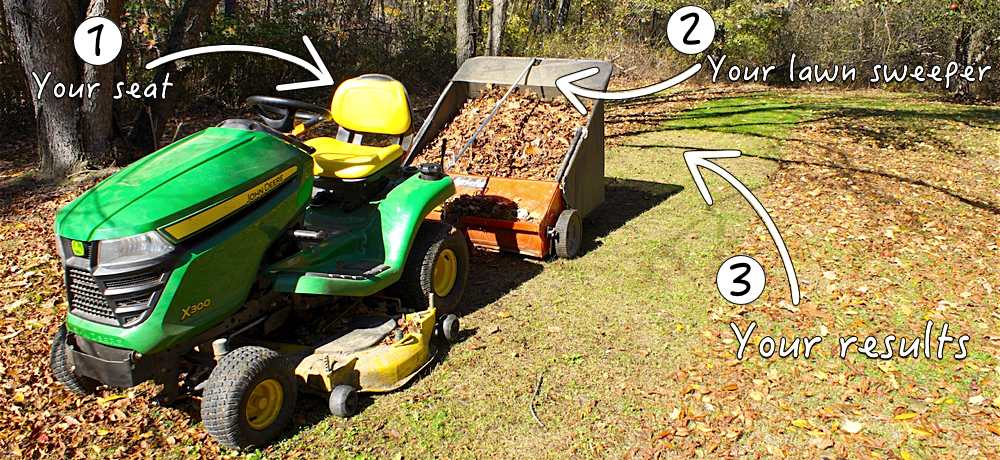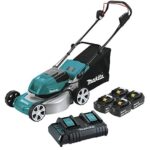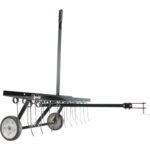Are you tired of spending hours raking leaves and picking up grass clippings every season? You might have heard about lawn sweepers and wondered: do lawn sweepers really work?
If you want a faster, easier way to keep your yard clean and looking great, this question is crucial. Imagine cutting your cleanup time in half while still enjoying a neat lawn that impresses your neighbors. You’ll discover how lawn sweepers work, their benefits, and the potential drawbacks you should know before buying one.
By the end, you’ll have a clear idea if a lawn sweeper is the right tool to make your yard care simpler and more efficient. Keep reading to find out how to transform your lawn cleanup routine for good!
You May Like
- Ultra lightweight and easy to use, 21″ brush width yard sweeper, Leaf…
- Works best on flat surfaces, short or recently cut grass; good for dry…
- Do NOT use in wet or windy conditions. For best results: only use in dry…
- Adjustable leaf sweeper rake height for easy and efficient collection of…
- Keep Your Lawn Clean: The Agri-Fab 26” lawn sweeper has 4 brushes to…
- Easy To Use Brush Height Adjustment: The Agri-Fab lawn sweeper is designed…
- Sweep Up More Debris: The Agri-Fab 26” push lawn sweeper has a large…
- Sweep Up More Debris: The Agri-Fab 26” push lawn sweeper has a large…
- Scotts Lawn Sweeper with 26” Sweeping Width. Light weight and easy to use
- Scotts Lawn Sweeper recommended for level ground only. The push sweeper has…
- Height of brushes must be adjusted to your lawn. Set brushes ¼” Deep…
- Scotts Lawn Sweeper only works on dry leaves and debris, sweeps up 80% on…
- 42 in. sweeping width; 22 cu. ft. capacity hopper
- 11 in. spiraled polypropylene brushes – an Ohio Steel patented exclusive…
- Drawbar can be offset left or right for simultaneous sweeping and mowing
- Drawbar and bag fold for easy storage
- 5:6 to 1 brush to wheel ratio – best in market!
- Large, 12″ x 3″ tires allow for smoother towing
- 28 cu. ft. flow-through bag fills from the back to front picking up more so…
- Quick and easy assembly takes approximately 30 minutes or less

Credit: www.youtube.com
How Lawn Sweepers Operate
Lawn sweepers use rotating brushes to gather leaves and debris. The brushes spin as the wheels turn or the engine runs. This motion moves debris from the lawn onto a collection area. The brushes reach into grass and pull up stuck leaves and clippings.
The debris collection system holds the swept-up material in a hopper or bag. This part can be easily emptied when full. Some lawn sweepers have adjustable brushes to handle different lawn types and debris sizes. The system works best on flat, smooth lawns for easy debris pickup.

Credit: mowrator.com
Advantages Of Lawn Sweepers
Quick debris removal helps keep your yard tidy without much effort. Lawn sweepers collect leaves, grass clippings, and small twigs fast. They save time compared to raking or blowing. You just push or tow them, and the brushes do the work. This makes cleanup easier, especially after windy days or during fall.
Maintaining a neat lawn is simple with a lawn sweeper. Regular use prevents buildup of debris that can harm grass. It also improves lawn health by keeping it clear and allowing sunlight and air to reach the soil. A clean lawn looks better and feels nice underfoot.
| Type | Best For | Yard Size |
|---|---|---|
| Push Lawn Sweeper | Small to medium yards | Up to 1/4 acre |
| Tow-Behind Lawn Sweeper | Large yards or farms | More than 1/4 acre |
| Gas-Powered Lawn Sweeper | Very large areas, thick debris | Over 1 acre |
Common Limitations
Limited hopper capacity means the lawn sweeper can hold only a small amount of debris. This causes frequent stops to empty the hopper. It can slow down cleaning, especially in yards with lots of leaves or grass clippings.
Uneven terrain makes it hard for the sweeper to collect debris properly. Wheels may get stuck or miss debris on slopes, bumps, or rough ground. This reduces how well the sweeper works and may need extra effort.
Large debris like sticks or pine cones often clog the sweeper’s brushes or hopper. These items can cause jams and stop the machine from working smoothly. Some sweepers are not built to handle big pieces well.
Wet or tall grass creates problems too. Wet grass can stick together and clog the machine. Tall grass may not be picked up fully or can slow down the sweeper. Dry, short grass gives the best results.
Maximizing Sweeper Efficiency
Reducing the volume of debris makes lawn sweepers more effective. Sweeping smaller piles is easier and faster. Clearing leaves before they get wet also helps. Wet debris clumps and is harder to collect.
Setting the brush height correctly is key. Too low can damage grass and block the sweeper. Too high leaves debris behind. Adjust the brush so it just touches the ground.
Choosing the right sweeper model depends on lawn size and type. Push sweepers suit small yards. Tow-behind models work better for large areas. Gas-powered sweepers handle heavy debris well but need more care.

Credit: lawnsweeperreviews.net
Frequently Asked Questions
How Effective Is A Lawn Sweeper?
A lawn sweeper efficiently clears leaves, grass clippings, and debris, saving time compared to raking. It works best on flat, well-maintained lawns but requires frequent emptying in dense areas. Choose models based on lawn size and terrain for optimal results.
Is It Good To Sweep Your Lawn?
Sweeping your lawn helps remove leaves and debris quickly, promoting a clean, healthy yard. It works best on flat, well-maintained lawns. Avoid sweeping dense or uneven areas often, as it may require frequent emptying or struggle on rough terrain.
Do Tow Behind Lawn Sweepers Work Well?
Tow-behind lawn sweepers work well on large, flat lawns for quickly collecting leaves and grass clippings. They save time and effort compared to raking. Their efficiency depends on terrain and debris type. Frequent emptying may be needed in dense areas.
They are ideal for maintaining neat yards.
Which Is Better, A Lawn Sweeper Or A Bagger?
A lawn sweeper efficiently collects leaves and debris, ideal for large, flat lawns. A bagger attaches to mowers, collecting clippings during mowing. Choose a sweeper for faster yard cleanup; pick a bagger for simultaneous mowing and debris collection. Your lawn size and terrain influence the best choice.
Conclusion
Lawn sweepers offer a practical way to clear leaves and debris. They save time and reduce physical effort compared to raking. Best used on flat, open lawns, they keep yards tidy. Choose a model that fits your lawn size and terrain.
Regular use helps maintain a neat, healthy lawn appearance. Overall, lawn sweepers work well for many yard cleanup needs.









